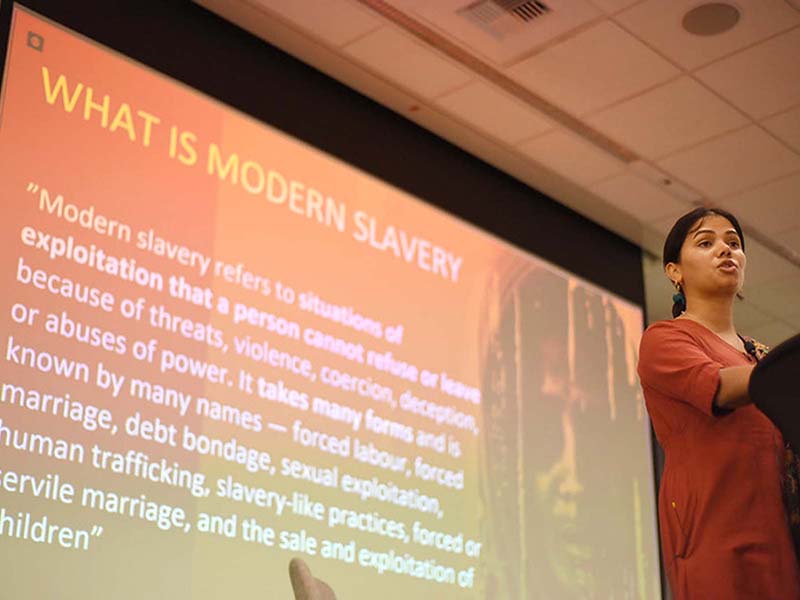
iStockphoto / seb_ra
Authors
-
Peter Nestor
Former Director, BSR
The UK Supreme Court’s recent decision in Vedanta v. Lungowe is an important read for corporate responsibility practitioners. Although it’s a jurisdictional ruling, for the first time, the UK Court held that a parent company sitting in London could be legally liable for harms allegedly caused to community members living near its subsidiary’s mining operation in Zambia.
The decision has implications for how companies influence the operations of their subsidiaries through corporate responsibility policies, training, and management support. After Vedanta, many practitioners and legal counsel may, understandably, think about the benefits of retreating from creating or enforcing these types of policies on subsidiaries in fear that they too may be legally liable for harm.
However, this is almost always going to be the wrong approach. Rather, we believe it is in the best interest of companies to double down on working with subsidiaries to ensure they properly understand and adequately manage environmental and social risk. Failure to do so will result in greater risk of harm occurring to communities and will expose the parent and subsidiary companies to increased legal risk.
The Vedanta Decision
Vedanta Resources PLC is an Indian mining company listed on the London stock exchange. They have since de-listed and now maintain a small office in London. Konkola Copper Mines (KCM) is a subsidiary of Vedanta that operates a mine in Zambia. The plaintiffs in the lawsuit, Zambian community members living near the mine, allege that KCM caused significant environmental damage to their farming communities and severely impacted their livelihood and ability to earn a living.
The plaintiffs sued KCM and Vedanta in Zambia and the UK. They argued that Vedanta owed a “duty of care” to the communities, i.e. that the parent was also liable for the harm caused by the subsidiary, KCM, because it exercised enough influence over the way the corporate responsibility policies were implemented to be held legally responsible. The evidence is still being collected, but the allegations point to Vedanta’s corporate responsibility report showing that Vedanta adopted and enforced corporate policies governing environmental and human rights issues over its subsidiaries and that it provided training and monitoring over the implementation of those policies. This is similar to the way many companies implement corporate responsibility programs.
Before the ruling, the law in the UK, and most other jurisdictions, treated parents and subsidiaries as separate companies when it came to holding them accountable for harm. This is one reason many companies establish a subsidiary relationship; each legal entity is accountable for their own profits, losses, operations, and legal liability. The plaintiffs sought to challenge this commonly held legal structure by arguing that Vedanta should also be accountable for the harm.
In the procedural ruling, the Court agreed with the community members and found that they could pursue their claim against Vedanta as long as they could demonstrate that it exercised a sufficient level of “involvement and control” over the operations at KCM at trial. The court did not hold that Vedanta and KCM were at fault or liable for the harm but rather that legally they could be liable and the case may proceed.
However, the court declined to establish a bright-line test for what a sufficient level of control over a subsidiary means. They simply stated that it all depends on the extent to which the parent “intervenes in, controls, supervises, or advises the management… of the subsidiary.”
In fact, they refuted what had previously been thought of as the test, which was articulated in an earlier case, Chandler v. Cape. In order to free plaintiffs from the “straitjacket” of needing to gather evidence to meet the bright-line test, they simply found that as long as Vedanta, through its policies, training, and monitoring, exercised enough influence over KCM, Vedanta could be liable for KCM’s alleged harm.
What does this mean for corporate responsibility practitioners?
The immediate and understandable reaction to Vedanta may be to simply retreat from providing corporate-level policies, training, and management support to subsidiaries, and being a purely passive investor. This seems like the wrong response, and companies should instead continue to supporting their subsidiaries for several reasons.
First, failing to understand and effectively manage environmental and human rights risks by subsidiaries leaves companies exposed to legal liability for negligent oversight. Several lawsuits currently pending in Canada are based, in part, on the theory that a parent owes a separate duty of care to local community members when it makes general company-wide statements that can apply to the subsidiary, such as a “commitment to respecting human rights.” The parent then can be liable, under the theory of those cases, when it fails to take adequate steps to protect against foreseeable harms. That can occur, for instance, when the parent understood that the local operating environment presented risks of security-related human rights violations, and it was foreseeable that a failure to properly select, train, supervise, and monitor security personnel employed by its subsidiary would cause harms.
Second, taking a hands-off approach may not protect the company under Vedanta. When a company makes general statements or issues general policies applicable to its operating units, under the theory of Vedanta and other such cases, it undertakes a degree of responsibility. However, a failure to make such general statements, or issue general policies, also creates risks. While a company might choose to totally stand to the side and allow local operating units to manage its own affairs purely to avoid potential legal risks, the subsidiary may not operate as effectively, or suffer economic and local legal harms that vastly outweigh the potential legal exposures. Indeed, even in the absence of any general proclamations or policies, certain legal responsibilities still can accrue, such as potential risks that arise when the company consolidates earnings from a passive subsidiary. In other words, doing nothing to try to circumvent the Vedanta holding creates risks of its own.
Third, the UK Supreme Court signaled that these cases are likely to be examined on a case-by-case basis. The circumstances surrounding each allegation of harm will be unique and the court will look at the content of corporate policies as well as how they were enforced. When the company’s policies, procedures, and implementation efforts are examined under the microscope of a lawsuit, the company will be in a much stronger position if it can demonstrate meaningful effort to develop and implement effective polices and procedures, rather than burying its head in the sand.
It is in the best interest of companies to double down on working with subsidiaries to ensure they properly understand and adequately manage environmental and social risk.
At its core, the Vedanta court advises companies to actually do what they claim to do in their corporate responsibility reports or potentially face legal liability. If the parent adopts and enforces an environmental or human rights policy “shown to contain systemic errors” which later causes harm to third parties, it cannot hide behind a parent-subsidiary legal relationship to escape liability.
Ultimately, the best legal defense – and the best outcome for communities – is to avoid a lawsuit in the first place. The best way to do this is by developing and implementing smart policies and programs in the right way so that harm does not occur.
BSR’s latest sustainability insights and events straight to your inbox.
Topics
Let’s talk about how BSR can help you to transform your business and achieve your sustainability goals.







